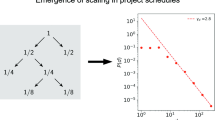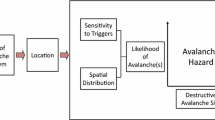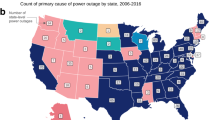Abstract
The proportional hazards model is applied to a case study water main break database to identify the hazard characteristics in relation to the factors causing breaks for various categories of the pipes. The analysis showed that a distinction could be made as of when a group of the pipes reach constant hazard stage by using the methodology of building the proportional hazards models for multiple pipe breaks introduced inTheory part of this issue. Effects of the environmental factors that affect the pipe failures are also analyzed and physical interpretations of the phenomena are illustrated. The methodology can provide guidelines on determining a category of pipes that needs more preventive rehabilitation or replacements.
Similar content being viewed by others
Abbreviations
- CI-0 :
-
Cast Iron pipes with 0 previous number of breaks
- CI-1 :
-
Cast Iron pipes with 1 previous number of breaks
- CI-2 :
-
Cast Iron pipes with 2 previous numbers of breaks
- DI-0 :
-
Ductile Iron pipes with 0 previous number of breaks
- DI-1 :
-
Ductile Iron pipes with 1 previous number of breaks
- DI-2 :
-
Ductile Iron pipes with 2 previous number of breaks
- h(t) :
-
Hazard function of the time to failure of pipe
- H 0 (t) :
-
Cumulative baseline hazard function of the time to failure of pipe
- h 0 (t) :
-
Baseline hazard function of the time to failure of pipe
- LD :
-
Land development with more than 1/3 of Urban area, 1=Yes, 0=No
- MBD :
-
Moist Bulk Density of soil
- PFA :
-
Potential Frost Action of soil
- PFAH :
-
Potential Frost Action of a soil association evaluated as high, 1=Yes, 0=No
- ROC :
-
Risk of Corrosion of soil
- ROCH :
-
Risk of Corrosion of a soil association evaluated as high, 1=Yes, 0=No
- SSP :
-
Shrink-Swell Potential of soil
- SSPM :
-
Shrink Swell Potential of a soil association evaluated as medium, 1=Yes, 0=No
References
Andreou, S.A., Marks, D.H., and Clark, R.M. (1987a). “A new methodology for modeling break failure patterns in deteriorating water distribution systems: Theory.”Advances in Water Resources, Vol. 10, pp. 2–10.
Andreou, S.A., Marks, D.H., and Clark, R.M. (1987a). “A new methodology for modeling break failure patterns in deteriorating water distribution systems: Theory.”Advances in Water Resources, Vol. 10, pp. 2–10.
Clark, R.M., Stafford, C.L., and Goodrich, J.A. (1982). “Water distribution systems: A spatial and cost evaluation.”Journal of Water Resources Planning and Management, ASCE, Vol. 108, No. 3, pp. 243–256.
Constantine, A.G., and Darroch, J.N. (1993). In S. Osaki, D. N. P. Murthy (Eds.),Pipeline Reliability: Stochastic models in engineering technology and management. Singapore, World Scientific.
Goulter, I.C. and Kazemi, A. (1988). “Spatial and temporal groupings of water main pipe breakage in Winnipeg.”Canadian Journal of Civil Engineering, Vol. 15, No. 1, pp. 91–97.
Lei, J. (1997).Statistical approach for describing lifetimes of water mains—Case Trondheim Municipality, Report No., 22F007.28, SINTEF Civil and Environmental Engineering, Trondheim, Norway.
Mavin, K. (1996).Predicting the Failure Performance of Individual Water Main, Research Report No. 114, Urban Water Research Association of Australia, Melbourne, Australia.
McNeill L.S. and Edwards, M. (2001). “Iron pipe corrosion in distribution systems.”Journal of the American Water Works Association, Vol. 93, No. 7, pp. 88–95.
Rajani, B. and Kleiner, Y. (2001). “Comprehensive review of structural deterioration of water mains: physically based models.”Urban Water, Vol. 3, pp. 151–164.
Shamir, U. and Howard, C.D.D. (1979). “An analytic approach to scheduling pipe replacement.”Journal of American Water Works Association, Vol. 71, No. 5, pp. 248–258.
Author information
Authors and Affiliations
Corresponding author
Rights and permissions
About this article
Cite this article
Park, S. Identifying the hazard characteristics of pipes in water distribution systems by using the proportional hazards model: 2. Applications. KSCE J Civ Eng 8, 669–677 (2004). https://doi.org/10.1007/BF02823558
Received:
Accepted:
Issue Date:
DOI: https://doi.org/10.1007/BF02823558




